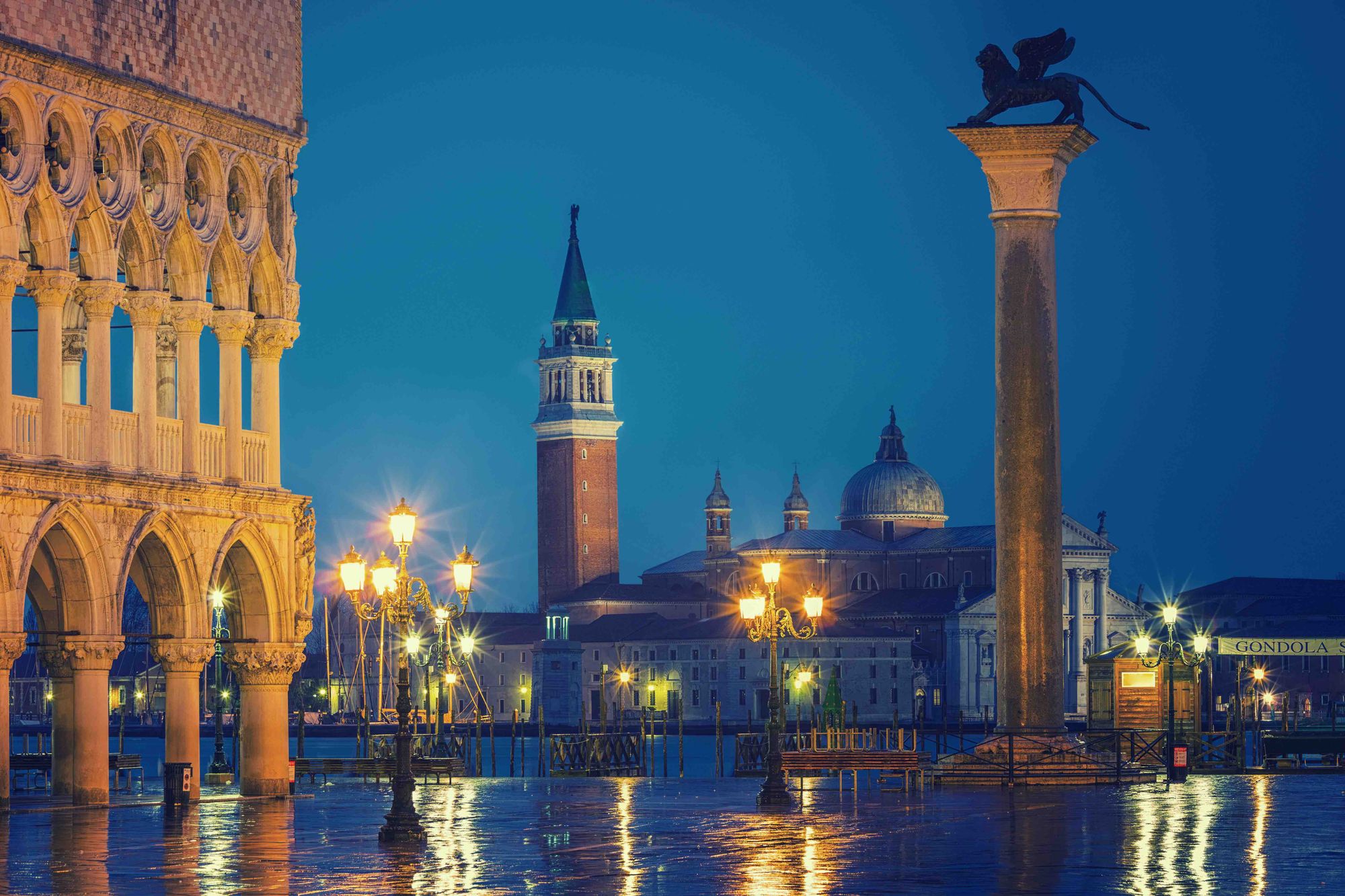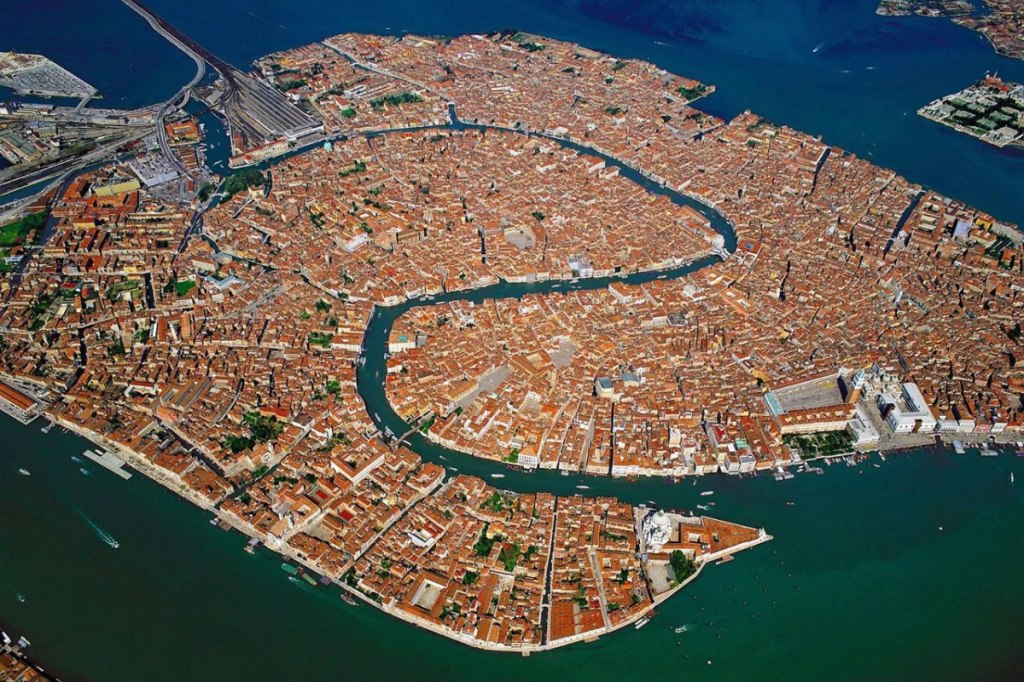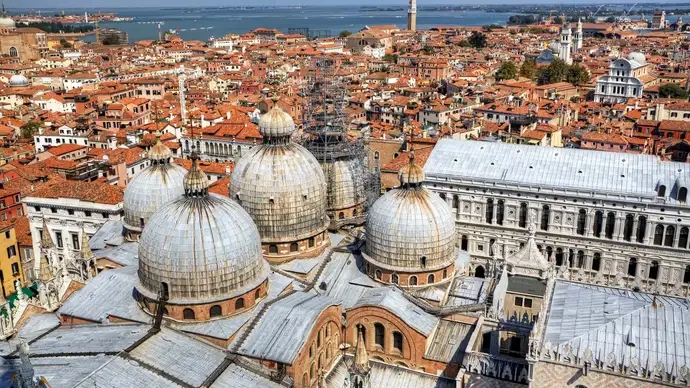Venice.
Pitched as one of the more romantic spots in all of Europe, Venice has held a special place in travelers’ logs since the 14th century.

Antiquity rose out of the water like a surreal artifact of an earlier time. Pitched as one of the more romantic spots in all of Europe, Venice has held a special place in travelers’ logs since the 14th century. In our masthead, the Piazza San Marco gleams at night. It’s view unrivaled. St. Mark’s Square is an absolute must-see with the opulent cathedral, the immense bell tower, and the flocks of pigeons. Trust me, there are a lot of pigeons. Looking back to my first trip to the island city, I was extremely privileged to be a traveler on those ancient cobblestones.

Since the fall of the Venetian republic in 1797, the city has held an unrivaled place in the Western imagination and has been endlessly described in writing and verse. The luminous spectacle of ornate marbled and frescoed palaces, bell towers, and domes reflected in the sparkling waters of the lagoon under a blue Adriatic sky has been painted, photographed, and filmed. The depictions make it difficult to distinguish the real city from its romantic images. The visitor arriving in Venice is still transported into another place and time, one whose atmosphere and beauty remain difficult to find a comparison.

The settlement in the lagoon predates Roman times, but the present urban structure took shape in the early 7th century. Migrants from the mainland swelled existing fishing communities on the higher mudflats and sandbanks. Among these early settlements, Rivo Alto, its name corrupted over time to Rialto, was the most central and became the heart of Venice, linking together 118 separate islands with bridges and canals and placing all other settlements to the rule of its elected doge (duke). In all these lagoonal settlements the characteristic plan, still detectable in the street patterns, was dominated by a navigable channel from which side channels branched out at intervals.
More than 200 original canals have been linked together to form a dense urban network on either side of the curving Grand Canal. The great backward S of the Grand Canal (pictured above) is more than two miles long, from the railway station to San Marco Basin in front of the Doge’s Palace. Its width varies from about 100 to 225 feet (30 to 70 meters), and it is lined by buildings that once were the palaces of great merchant families and the public warehouses, or fondaci, used in foreign trade.
The twelfth century saw Venice and the remainder of the Byzantine Empire engage in a series of trade wars before the events of the early thirteenth century gave Venice the chance to establish a physical trading empire. Venice had agreed to transport a crusade to the “Holy Land” but the idea stalled when the Crusaders couldn’t pay. The heir of the deposed Byzantine emperor promised to pay Venice and convert to Latin Christianity if they put him on the throne. Venice supported this power play, but when the Byzantine heir returned unable to pay and unwilling to convert, relationships soured and the new emperor was assassinated. The Crusaders then sieged, captured, and sacked Constantinople. Many treasures were removed by Venice, who laid claim to part of the city of Crete, and large areas including parts of Greece become Venetian trading outposts.
Venice then warred with Genoa, a powerful Italian trading rival. That struggle reached a climactic turning point with the Battle of Chioggia in 1380. Venice won the conflict with Genoa but lost to a Genoan ally King Louis the Great of Hungary causing it to cede territory.
Meanwhile, the Doges’ power was being eroded by the nobility. After heavy discussion, in the fifteenth century, Venetian expansion targeted the Italian mainland with the capture of Vicenza, Verona, Padua, and Udine. This era, 1420–50, was arguably the high point of Venetian wealth and power. The population even sprang back after the Black Death, which often traveled along trade routes. The control of Venice changed hands on several occasions bringing a tapestry of cultures to the island city.
The Venetian Republic came to an end in 1797 when Napoleon’s French army forced the city to agree to a new, pro-French, ‘democratic’ government; the city was looted of great artworks. Venice was briefly Austrian after a peace treaty with Napoleon, but became French again after the Battle of Austerlitz in 1805, and formed part of the short-lived Kingdom of Italy. The fall of Napoleon from power saw Venice placed back under Austrian rule.
In the 1860s, Venice became part of the new Kingdom of Italy, where it remains to this day in the new Italian state. Arguments over how best to treat Venice’s architecture and buildings persist producing conservation efforts that retain a great sense of atmosphere. Yet the population has been cut in half since the 1950s and flooding remains a problem.

Ever since the remains of St. Mark were brought to Venice in 829, this former chapel of the Doges has been an important religious landmark. And when Venetian crusaders brought back shiploads of Byzantine art treasures after the fall of Constantinople, St. Mark’s became wealthy beyond imagination. Antiquity grew and was curated by a merchant/trader avarice. Today, Basilica di San Marco (St. Mark’s Basilica) is the most popular of all the places to visit in Venice. The Basilica is a box that you need to check on your visit, like the St Mark’s square.

However, by far, the most iconic image seeded in the western mind is the gondola ride. Haled as a must for lovers, I can attest to the pull of the imagery and the sway of the calm water. During my gondola ride on the smaller canals, I was lulled by the gentle movement of the waves and fascinated by the gondolier’s tales of yesteryear. On my first ride, I came to truly embrace the watery perspective of the city. Generations have called Venice home, as caretakers to a merchant legacy almost gone.

I told a friend recently, that touring Italy required sharing the journey with a lover. There is something magical about the majestic and unrivaled beauty of Italy that bedazzles and mesmerizes the soul. The experience and the subsequent memories should be shared to be fully appreciated.
Until next time.

